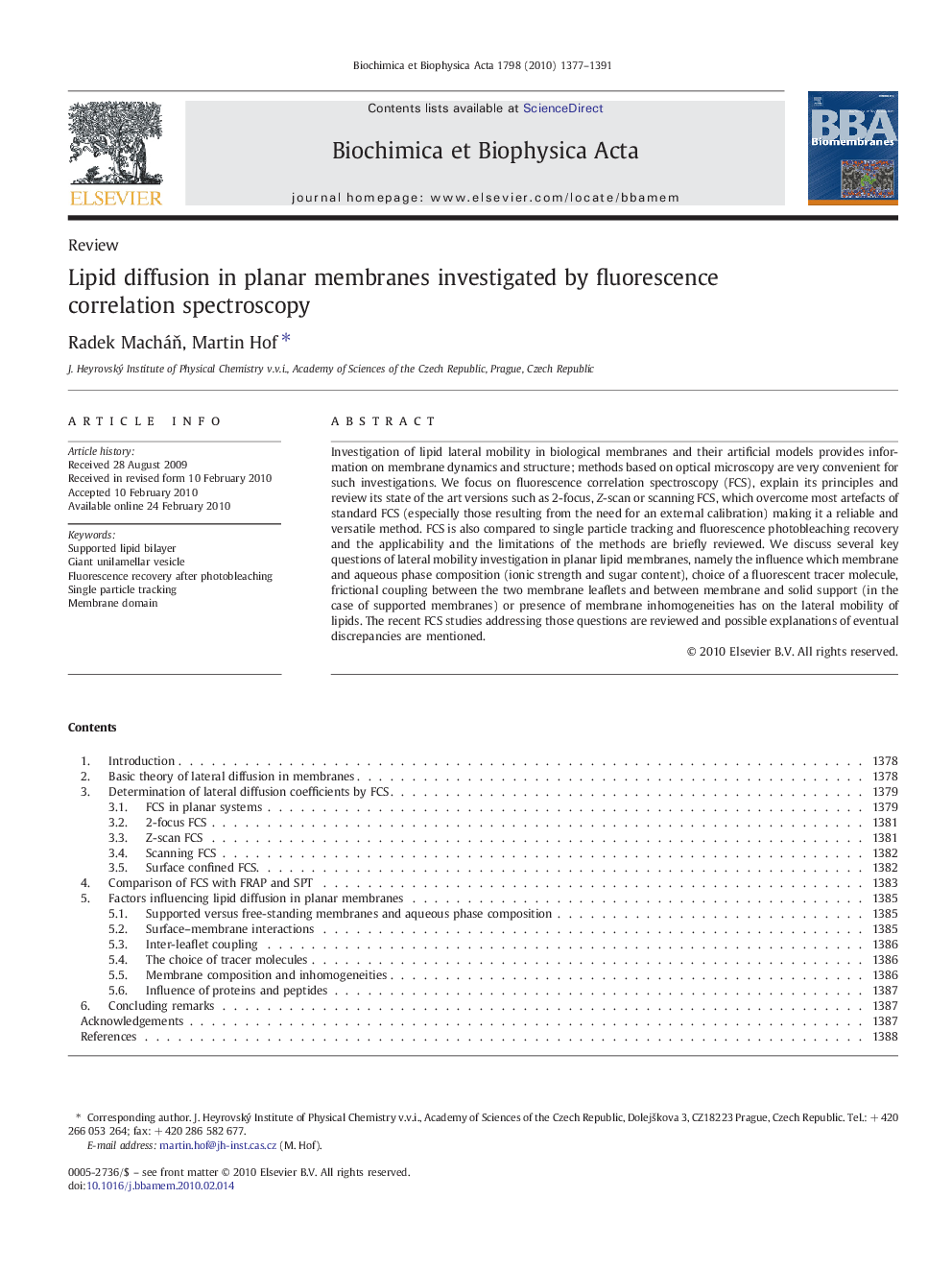| Article ID | Journal | Published Year | Pages | File Type |
|---|---|---|---|---|
| 1944828 | Biochimica et Biophysica Acta (BBA) - Biomembranes | 2010 | 15 Pages |
Investigation of lipid lateral mobility in biological membranes and their artificial models provides information on membrane dynamics and structure; methods based on optical microscopy are very convenient for such investigations. We focus on fluorescence correlation spectroscopy (FCS), explain its principles and review its state of the art versions such as 2-focus, Z-scan or scanning FCS, which overcome most artefacts of standard FCS (especially those resulting from the need for an external calibration) making it a reliable and versatile method. FCS is also compared to single particle tracking and fluorescence photobleaching recovery and the applicability and the limitations of the methods are briefly reviewed. We discuss several key questions of lateral mobility investigation in planar lipid membranes, namely the influence which membrane and aqueous phase composition (ionic strength and sugar content), choice of a fluorescent tracer molecule, frictional coupling between the two membrane leaflets and between membrane and solid support (in the case of supported membranes) or presence of membrane inhomogeneities has on the lateral mobility of lipids. The recent FCS studies addressing those questions are reviewed and possible explanations of eventual discrepancies are mentioned.
